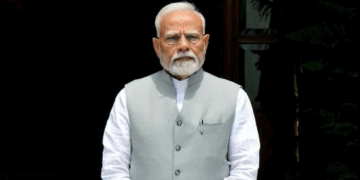Introduction: The European Union (EU) is grappling with the challenge of reducing its dependency on China for critical minerals, particularly those vital for its green transition, such as lithium and rare earths. As geopolitical tensions escalate following Russia’s invasion of Ukraine and amid a growing U.S.-China standoff, the EU is focusing on risk mitigation in its economic policy. EU leaders will address these issues during their summit on Friday.
De-risking Strategy: The EU aims to limit its reliance on certain strategic products, emphasizing those crucial for its green transition. For instance, it seeks to reduce its dependence on lithium, used in electric vehicle batteries, and rare earths, essential for wind turbine magnets. Currently, China processes nearly 90% of rare earth elements and 60% of global lithium.
The EU’s strategy involves boosting domestic extraction, recycling, and processing of critical raw materials by 2030 and ensuring that no third countries provide more than 65% of any key mineral. It is essential to note that de-risking does not imply complete decoupling from China.
Lessons from Past Dependency: The EU has learned valuable lessons from its dependence on Russia for natural gas, leading to supply disruptions following Russia’s 2022 invasion of Ukraine. This experience has increased the EU’s wariness toward China, which has grown closer to Moscow. Simultaneously, the EU’s trade deficit with China has doubled to 400 billion euros ($420 billion) over five years.
China’s recent imposition of export licensing requirements for certain gallium and germanium products used in semiconductor manufacturing has further raised concerns within the EU. The EU had also relied on China for protective equipment during the COVID-19 pandemic and now depends on the country for medicines and pharmaceutical raw materials.
Economic Security Strategy: To address rising geopolitical tensions, the EU unveiled its European Economic Security Strategy in June, focusing on various risk factors. These include risks to supply chain resilience, the physical and cyber security of critical infrastructure, technology security, economic dependencies, and economic coercion.
The European Commission has proposed conducting risk assessments in these areas and may invest to enhance the EU’s competitiveness or establish partnerships with like-minded countries. Protective measures, such as the recently approved Anti-Coercion Instrument, export controls, and investment restrictions in third countries, are also under consideration.
Assessment of Technologies: The European Commission has recommended assessments for four technologies: advanced semiconductors, artificial intelligence, quantum technology, and biotechnology. These assessments will examine potential risks related to military applications or human rights abuses by “countries of concern.” While the EU’s economic strategy does not explicitly name China, it emphasizes partnering with like-minded countries and reducing reliance on China.
These assessments are expected to be completed by the end of the year, following which the Commission may propose measures, including outbound investment restrictions. In early 2024, a further six technology fields, including energy, robotics, and space, may be assessed.
Challenges and Balancing Act: Implementing this strategy will be a delicate balancing act for the European Commission, as national security remains the competence of individual EU member states. While harmonization is recognized as necessary, many member states are hesitant to transfer power to Brussels. The Commission emphasizes that the strategy, including assessments, will be conducted in collaboration with EU governments.
Conclusion: As geopolitical tensions intensify, the EU is actively working to reduce its dependency on China for critical minerals and enhance its economic security. The EU’s multifaceted approach includes domestic resource development, risk assessments, and potential protective measures. Balancing centralized coordination with member state sovereignty will be a challenge in implementing this strategy.








 India
India












